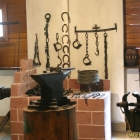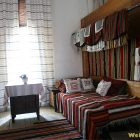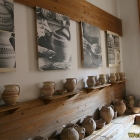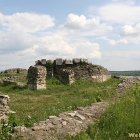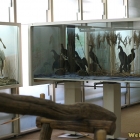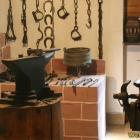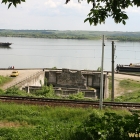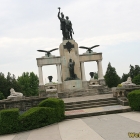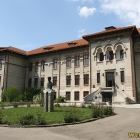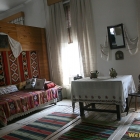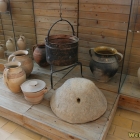Drobeta Turnu Severin, the regional museum of Oltenia
The region
Oltenia is the south-eastern part of Romania, situated on the banks of rivers Danube, Jiu and Olt. It is famous for its witty and active people, as well as for its folk traditions. The capital of the region is Craiova, with other major cities as Slatina, Drobeta Turnu Severin or Targu Jiu (where you can see some of the works of Constantin Brancusi, one of the greatest modern sculptors of the world).
Mehedinti county is the eastern part of Oltenia, on the border with Serbia. Here the Danube creates one of the most impressive natural monuments, the Gorges of Danube. Man has enhanced the surroundings by adding a large dam for the Iron Gates hydroelectric power plant (which also serves as a bridge to Serbia) and the largest stone statue in Europe, the statue of Decebalus, the last Dacian king.
The history
The park of Iron Gates Regional Musem in Severin is full of history. The remains of the Roman conquest of Dacia may not look impressive after 2000 years, but are of great importance. Here we can see the ruins of the first Roman castrum (settlement) in Dacia. And the remains of the bridge of Apollodorus of Damascus. The famous Syrian architect was commissioned by emperor Trajan to build the first bridge ever attempted over lower Danube. And Apollodorus was up to the task, building in just two years the greatest bridge in the entire Antiquity. The swiftness of this accomplishment made historians wonder whether or not the Romans diverted temporarily the second largest river of Europe to complete the work. The bridge was over a kilometer long, 15 m wide and 19 m high.
The Romans used the bridge to successfully conquer Dacia, as recorded on the triumph column in Rome, engineered by the same Apollodorus of Damascus. But they destroyed the bridge themselves when retiring after less than two centuries in fear of barbarian invasion. Only parts of a foot remains today from the famous bridge.
The museum
The museum in Drobeta Turnu Severin covers a wide variety of themes, from traditional living to history, art, biology, science and others. Its antiquity section displays remains from the oldest permanent settlement in Europe, Schela Cladova and other objects from neolithic, bronze age and iron age.
An important part of the museum of Iron Gates Region is a village museum, presenting costumes, the way traditional rooms looked like, crafts and traditions of Romanian peasants. It is also evoked the life on Ada Kaleh, an island covered by waters during the building of Iron Gates dam. Ada Kaleh was a relic of Ottoman conquest, inhabited by Muslims with traditional costumes and distinct architecture.
Bellow the ground level there is a room with aquariums in which most of the species of fish that live in Danube can be seen.
The art section of this museum has a large collection of paintings signed by famous Romanian painters: Ștefan Luchian, Gheorghe Petrașcu, Theodor Pallady, Iosif Iser, Nicolae Tonitza, Camil Ressu, Victor Brauner, Corneliu Baba, Samuel Mutzner, Nicolae Grigorescu, Ion Țuculescu, Theodorescu Sion.
Mai multe despre: Romania • Drobeta Turnu Severin • ethnography museum • folklore • Mehedinti • Museum • Oltenia • Romania- Home Page
start page - Architecture
landmark buildings - Sacred architecture
places of worship - Nature
landscape photography - Concert
performing artists - Christmas
Santa Claus pictures
- Jooble
jobs for photographers - Escape
an out of control blog - Merry Christmas
The best organizer of Christmas parties - Astro photo
Eclipse hunting and astrological photography

